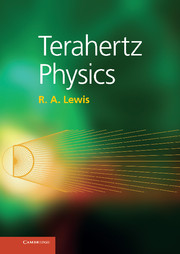Book contents
- Frontmatter
- Dedication
- Contents
- Preface
- 1 INTRODUCTION
- Part I Basics
- 2 OSCILLATIONS
- 3 COMBINING OSCILLATIONS
- 4 LIGHT
- 5 MATTER
- 6 INTERACTION OF LIGHT AND MATTER
- Part II Components
- Part III Applications
- Appendix A Prefixes
- Appendix B Mathematical symbols
- Appendix C Mathematics
- Appendix D Further reading
- Glossary
- Index
- Miscellaneous Endmatter
2 - OSCILLATIONS
from Part I - Basics
Published online by Cambridge University Press: 05 July 2013
- Frontmatter
- Dedication
- Contents
- Preface
- 1 INTRODUCTION
- Part I Basics
- 2 OSCILLATIONS
- 3 COMBINING OSCILLATIONS
- 4 LIGHT
- 5 MATTER
- 6 INTERACTION OF LIGHT AND MATTER
- Part II Components
- Part III Applications
- Appendix A Prefixes
- Appendix B Mathematical symbols
- Appendix C Mathematics
- Appendix D Further reading
- Glossary
- Index
- Miscellaneous Endmatter
Summary
You don't know anything about trigonometry? That's OK, I'll teach you all you need to know as we go along. I will introduce summation notation, but explain it. If you know how to integrate, that might be an asset, but it is not strictly necessary as I will give you a visual description of what is involved. This should allow you to appreciate the meaning of the equations even if you do not have a full grasp of the apparatus of integration.
In this chapter we meet oscillations. We will look at the general way to describe any oscillation using mathematics.
To describe an oscillation in mathematical terms, we identify three key properties: how rapid it is, how large it is and when it starts. These three properties are more formally defined as frequency, amplitude and initial phase. We can express an oscillation mathematically by using a trigonometric function such as cosine or sine or by using a compact exponential notation involving complex numbers.
The time-bandwidth theorem appears over and over again in terahertz physics. It says that the product of the duration of a pulse (time) and the range of frequencies encompassed in the pulse (bandwidth) has a minimum value. Looked at in one way, if we have a short pulse, the pulse must involve a large range of frequencies. Looked at in another way, a well-defined frequency implies a very long pulse.
- Type
- Chapter
- Information
- Terahertz Physics , pp. 3 - 24Publisher: Cambridge University PressPrint publication year: 2013

